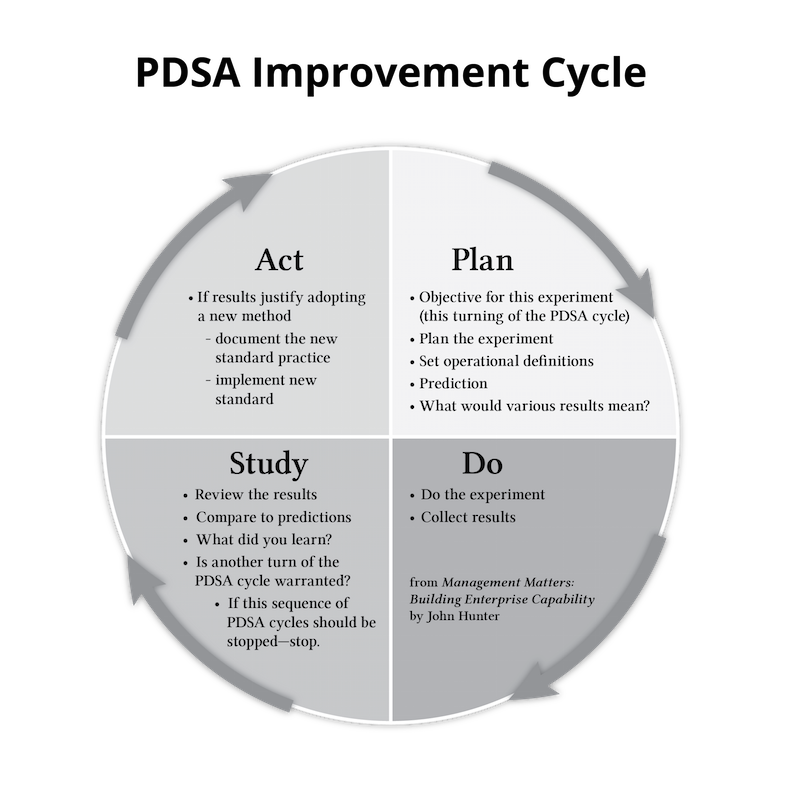Customer expectations are high in the highly competitive marketplace today. The quality of a product or service alone is no longer a differentiator; instead the overall quality of the experience is now the differentiator for customers.
ASQ has asked their Influential Voices to explore how this “new” expectation impacts on how we need to manage our organizations. See my past blog posts as part of the ASQ Influential Voices program (I have participated since 2012).
To some degree the premise is faulty and is making the common mistake of declaring old thoughts as if they are new. This is a common problem that hampers the application of the management improvement concepts: because the history of using the ideas are not explored to learn what has worked and what problems organizations have faced adopting the ideas.
But there is some truth to the idea that customer expectations have risen. Product quality, in many ways, has been raised in the last few decades and this naturally results in raised expectations. This pattern was well known in the 1960s (and before). Kano’s theory of customer satisfaction expressed how new features moved from being “delighters” for customers initially and eventually became minimum expectations (you gain no credit for delivering them but will upset customers if you fail).
It is also true that raising the overall customer experience is more difficult than raising product quality (due to the nature of the systems that deliver the results in each case).
I do think there is truth to the idea that customers have raised expectations for businesses to improve the entire experience. Customers are less willing to accept excuses about how the provider is not responsible for various aspects of the experience.

Mural at the Smith Samlanh Education Center in Phnon Phen, Cambodia
We expect to be able to pay for our purchases online and have an easy to use history of our purchases available. One of the examples of businesses continually failing in this expectation is seen at many USA financial institutions that often fail to provide history after a very short period of time (sometimes even as low as 1 or 2 years). This is an example of how far some organizations have to go. It is ludicrous to not keep permanent records of financial transactions in most cases.
While in many ways overall customer experiences are improving we still have huge room for improvement. Many companies continue to fail to even meet minimal required features (forget actually providing customer delight).
One way that shows the idea of focusing on the customer experience is nothing new is that it is the natural focus of the traditional management improvement methods (as described by Deming, Ackoff, Box, etc.). When people were seeking alternatives to “quality management” (as the use of that term was so vague in practice that it was difficult to know what was meant by “quality management”) I settled on “customer focused continual improvement.” That remains my touchtone.
An organization in 1980, 2000 or 2017 should have had the same focus on continually improving the customer experience. Reading through my posts on this blog (which I started in 2004) provides many examples of managing with that in mind: The most important customer focus is on the end users (2012), What Job Does Your Product Do? (2007), What Could we do Better? (2006), Delighting Customers (2010). These links all discuss the importance of understanding and continually improving the overall customer experience by gaining an in depth understanding of their needs and desires.
There is a difference in the way many organizations are managed today and managing with an understanding of your organization as a system aligned toward customer focused continual improvement. The ability to create great customer experiences is much easier with a management system based on customer focused continual improvement principles than one without.
It is very difficult to create great customer experiences if the management system doesn’t provide those interacting with customers the authority, tools, training and support to make decisions and continually improve the systems in place to deliver great customer experiences. A management system based on the principles that I have written of in this blog inherently supports those employees in doing exactly what they need to do.
I very much like the concept of the customer, or user, gemba. Employees need to understand how customers actually use their product or service (as I wrote in 2012: User Gemba).
The management system must not only give people the authority to react to specific customer desires individually but must integrate continual improvement of the processes and systems to continually enhance the ability of the organization to delight – even in the face of ever greater customer expectations.
There is not a magic bullet solution to creating the capabilities to delight customers with the overall customer experience. It requires creating a management system that encourages that focus and supports acting based on those principles every day.
There are concepts that help which have gained more attention in the last 20 years that are useful in these efforts. Iterating on a small scale with constant improvement is key. This is largely just what has long been advocated as piloting on a small scale and using the PDSA cycle to experiment and continually improve. The widespread adoption of agile software development practices has increased the awareness of the idea of delivering useful quickly and interacting based on user’s experiences. The application of these concepts (in agile or other ways) in our organizations still leaves a lot to be desired. Some of it is extremely well done but there is quite a bit of very poorly done implementation of the deliver working software quickly and iterate quickly concept.
Usability is another concept that has gained traction in the last few decades and has great potential. Often there has been conflict between how agile is often done and retaining a sensible focus on usability. I do not think there is a necessary conflict but it is an area that in practice has been difficult for many organizations (many do not give usability the focus it deserves in their efforts).
An example of failure to focus on the customer experience I personally find annoying is the practice of using click x, then click y, then click z instructions decades after hypertext made this an extremely poor practice. It shows how tied organizations become to outdated thinking and how slowly they adopt new technology (hypertext) into their thinking. Sure we adopt technology at a rapid pace, but we leave outdated practices in place because we so often fail to understand our own systems, customer needs and how to use new technology to improve.
Related: Outcome Measures and Output Measures – Customer Focus with a Deming Perspective – Looking in the Mirror at Customer Focus – Customer focus is at the core of a well managed company


